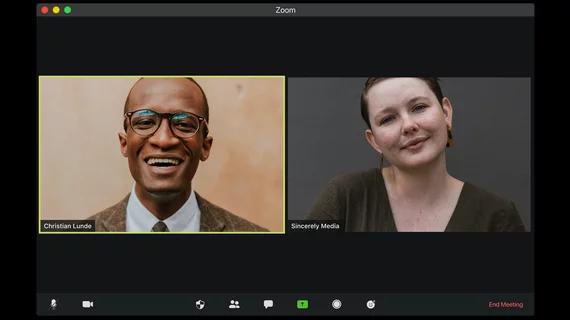Virtual reading room remains popular post-pandemic among certain radiologists, referrers
A virtual radiology reading room that launched at a large academic medical center during the COVID-19 pandemic has outlived its founding mission, facilitating remote referrer consultations well after the institution pulled its policies on social distancing.
The room’s evolution unfolded at Brigham and Women’s Hospital in Boston and is traced in a study published online Dec. 5 in JACR [1].
Comparing engagement statistics across several specialty-specific virtual reading rooms (VRRs), lead author Khushboo Jhala, senior author Ramin Khorasani and colleagues found no significant difference in average daily users between 90-day windows in summer 2020 (73 per day) and late 2021 to early 2022 (65 per day).
In addition, the maximum daily user count was 128 during the distancing period and a diminished but still robust 101 in the post-distancing period.
The institution’s collaboration platform of choice was Microsoft Teams.
Utilization-Predictive Clinical Questions
At the 1-year mark post-VRR inception, the investigators used focus groups to gauge likes and dislikes among consulting providers as well as reading radiologists.
Among the referrers—two from emergency medicine, two from internal medicine and one from surgery—the most-named VRR benefits included the ability to engage in real-time image viewing and discussion from anywhere in the hospital and the removal of commute distance from clinical to radiology workspaces, Jhala and co-authors report.
The team found levels of VRR utilization strongly varied by types of clinical questions the referrers wished to discuss. Utilization-predictive question types included focused (Is there a small bowel obstruction?) vs. descriptive (Where is the obstruction?) vs. longterm case-management (Is the cancer progressing or responding to treatment?).
VRRs ‘May Serve as a Lasting Part of Healthcare Architecture’
For their part, participating radiologists—representing emergency radiology as well as chest, nuclear medicine, breast, abdomen, ultrasound and MSK imaging—registered appreciation for VRR most conspicuously among subdivisions using standardized workflows.
Within these subspecialties, radiologist-cited benefits included:
- the ability to engage with providers from anywhere in the hospital,
- easily recollect the provider with whom findings were communicated via user log time stamps and
- exchange staffing responsibilities of the VRR despite workstation decentralization.
Meanwhile divisions with interrupted or combination workflows “noted difficulty in managing consultations amidst intermittent gaps in VRR staffing,” the authors comment. “Whereas in a physical reading room, a consulting provider can see interruptions (e.g., a radiologist away from the desk), this was harder to discern when dropping in virtually, with wait times seemingly unexplained.”
More:
Virtual reading room engagement endured two years post-inception despite reduced social-distancing guidelines, indicating VRRs may serve as a lasting part of healthcare architecture. Reading room workflow and consulting provider [clinical] question type predict VRR utilization at the divisional level.”

